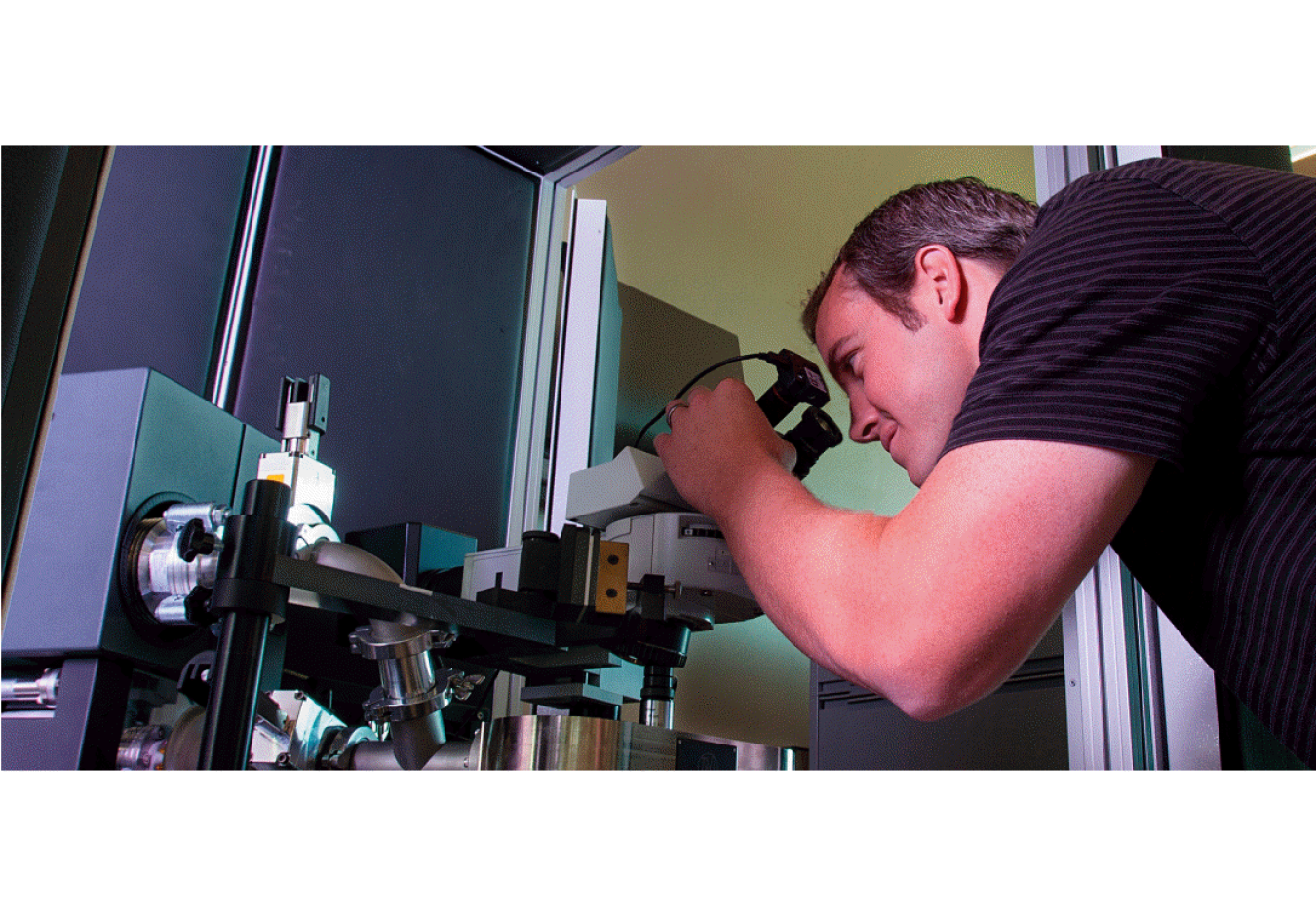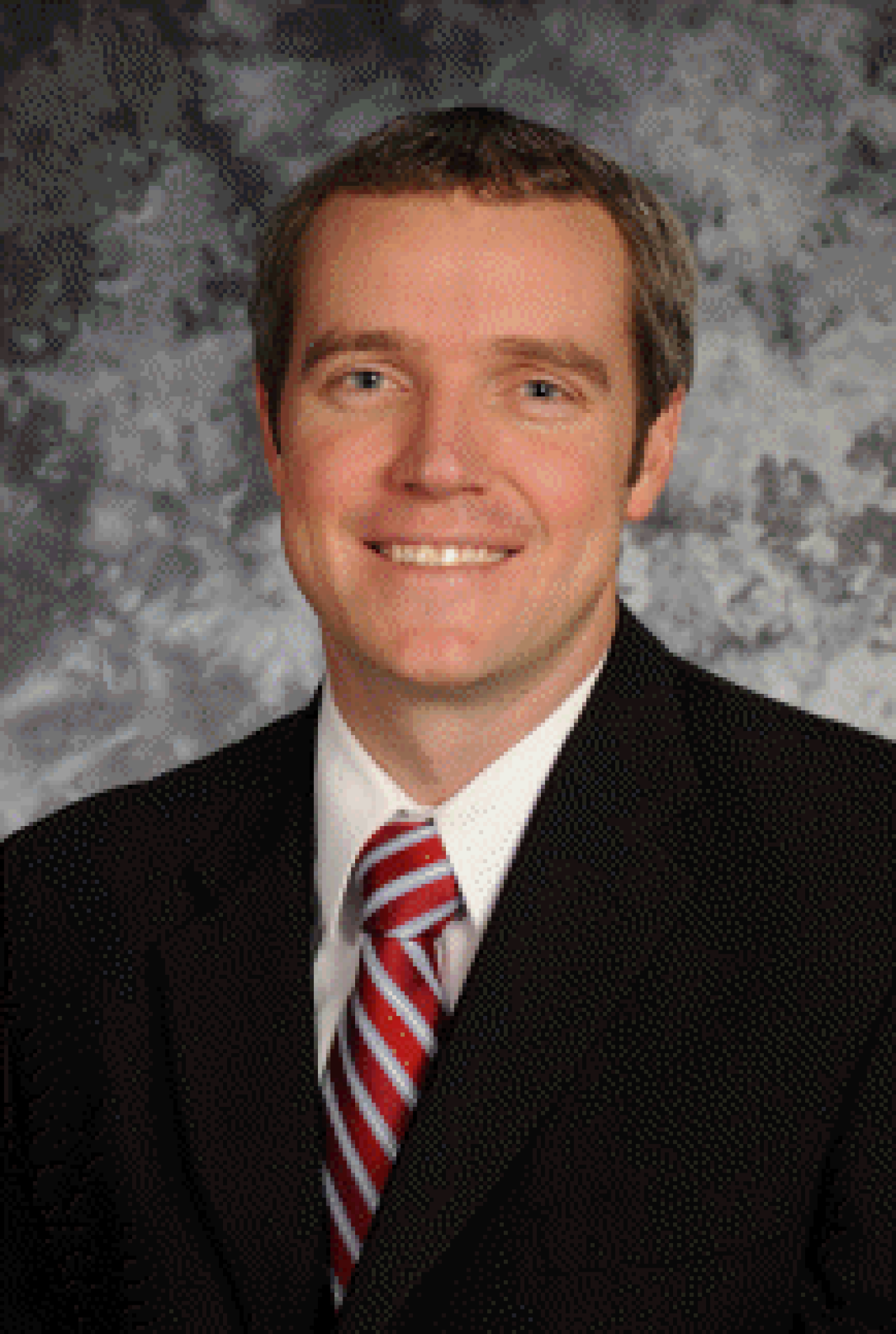Name: Colby Jensen; Institution: Utah State University; Program: Integrated University Program (IUP); Education Level: Graduate Student
October 1, 2019Dr. Colby Jensen grew up on a farm outside the small town of Preston, Idaho, physically close to Idaho National Laboratory (INL) and yet a world apart in many ways. He had no ambition to one day work as a researcher at the lab; in fact, he had little knowledge of the lab despite living just a few hours away. But after going away for college and eventually earning his Ph.D., Jensen realized that INL was exactly where he wanted to work.

Colby Jensen, Idaho National Laboratory (INL) research scientist and former Office of Nuclear Energy (NE) Integrated University Program (IUP) Fellow.
Jensen began his career as an undergraduate studying mechanical engineering at Utah State University (USU). He had always found that math came naturally to him, so engineering was a logical choice, though he had no particular career in mind. While at USU, Jensen took a class with Dr. Heng Ban, a professor of mechanical and aerospace engineering and founding director of the Center for Thermohydraulics and Material Properties. Ban saw potential in Jensen and took him under his wing, beginning a strong mentoring relationship that Jensen highly values.
Ban brought Jensen with him on a visit to INL in 2008, while Jensen was still finishing his bachelor’s degree, to work on a direct-funded Next Generation Nuclear Plant project. This was Jensen’s first visit to the lab, and the quality of interesting research being done there made a strong impression on him. Jensen went on to graduate as valedictorian of the USU College of Engineering and decided to stay at the university to pursue an advanced degree and continue his research on thermal conductivity in Ban’s lab.
The project that first brought Jensen to INL eventually became the focus of his master’s thesis: “TRISO Fuel Compact Thermal Conductivity Measurement Instrument Development.” After completing his master’s, Jensen received a fellowship from the Department of Energy’s Integrated University Program (IUP) (now University Nuclear Leadership Program [UNLP]) to continue his graduate work. Jensen stayed at USU and continued working with Ban, studying ion irradiation on thermal transport in zirconium carbide.
Jensen credits both Ban and the IUP fellowship for making his research path possible. Ban provided mentorship which, according to Jensen, “...makes all the difference in the world.” The IUP Fellowship made the Ph.D. financially viable for Jensen, providing support so he could continue to focus on his research.
While working on his Ph.D., Jensen actively sought out opportunities and pursued everything available to him. This mindset led him to France, where he spent a year researching, Colby Jensen, Idaho National Laboratory (INL) research scientist and former Office of Nuclear Energy (NE) Integrated University Program (IUP) Fellow. As a leader himself now, Jensen emphasizes that “mentorship is key.” He has made providing that leadership to younger scientists one of his main responsibilities. pioneering a joint Ph.D. in energy engineering from the Université de Reims Champagne-Ardenne and mechanical engineering from USU. His dissertation was titled “Bridging the Nano and Macro Worlds: Thermal Property Measurement using Scanning Thermal Microscopy and Photothermal Radiometry – Application to Particle-Irradiation Damage Profile in ZrC.
After he completed graduate school, Jensen was drawn back to INL. He initially considered careers in academia or at other national labs but says he realized that “the opportunity I was looking for was here.” From 2014 to 2016 he worked as a thermal analyst for experimental safety and performance evaluations at the Advanced Test Reactor (ATR) and Transient Reactor Test (TREAT) Facility. He then became the separate effects testing lead for irradiation experiments in the Fuel Performance and Design Department. In his present position, Jensen is deputy technical lead for development of advanced reactor fuels. He leads in-pile instrumentation development for transient irradiation testing, leads development of in-pile thermal properties measurement and is a principal investigator for transient testing of light water reactor and advanced reactor fuels.
Jensen has been involved in designing some of the first experiments in the reopened TREAT Facility, which provides transient testing of nuclear fuels and materials. Its unique design offers real-time monitoring of the fuel’s or material’s behavior under postulated reactor accident conditions, allowing scientists to determine the appropriate safe limits for the fuels and materials in nuclear power reactors.
As part of his current role, Jensen has a lot of direct involvement as a technical point of contact and collaborator with other researchers who are coming to use the facility. Many of them work under awards received from DOE’s Nuclear Energy University Program (NEUP). One of these researchers, in fact, is Heng Ban. Ban currently holds an award for an Integrated Research Project (IRP) conducting experiments at TREAT, with Jensen as one of his collaborators on a portion of the project studying transient boiling behavior. In this way, Jensen has come full circle, from an undergraduate just learning about nuclear energy to a subject matter expert advising experienced researchers, including his own mentor

When asked about his greatest successes, Jensen repeatedly returned to the importance of teamwork, collaboration and mentorship. He credits Ban in particular with providing excellent mentorship. As a leader himself now, Jensen emphasizes that “mentorship is key.” He has made providing that leadership to younger scientists one of his main responsibilities. Jensen’s efforts in this capacity have been recognized by his coworkers, as he won the 2018 INL Mentor of the Year Award.
Jensen complimented the teams he works with at INL and the researchers who visit the lab from all over the world. Jensen puts great value on working with dedicated people, and he advises his interns and young colleagues to always prioritize the team they are working with rather than the technical aspects when choosing a project.
Throughout his career, Jensen has “focused on what needs to be done” even when it has led him in unexpected directions. He has always looked for opportunities and taken leaps of faith, from his initial decision to pursue a Ph.D. (thanks to his IUP Fellowship) to earning a joint degree between French and American universities to his current testing work in TREAT. According to Jensen, forging new paths is not always easy, but it is certainly interesting.

